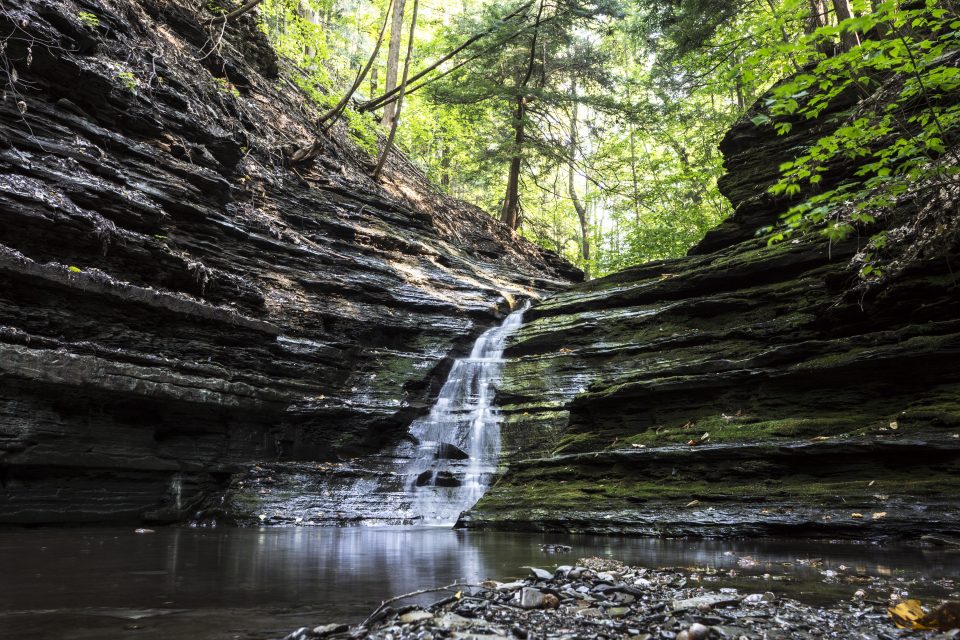By Kevin Peesker, President, Microsoft Canada
Natural resources are not only the foundation of our global economy, they are the baseline of the human experience. We depend on functioning ecosystems for clean air, water, food, medicine, energy and building materials. But these very ecosystems are threatened or in decline.
A lot of discussion on sustainability is focused on the challenge of sustainable energy production. Expanding the dialogue, it is important to consider that one-third of greenhouse gas (GHG) emissions that are fueling the climate crisis are a result of the destruction of trees, ground cover, peatlands and coastline plants and ecosystems. To avert the worst effects of the rapidly changing climate, humanity must both protect while drastically reducing and removing carbon dioxide and other GHG emissions from the atmosphere. The reality is, solving our planet’s carbon issues will require technology that does not exist today.
The next decade must be one of ambition and action. Addressing this crisis head-on will require new investments and collaboration across the private sector, public sector and academia. Recently, Michelle Lancaster, Microsoft’s Global Director of Sustainability, sat down with Megan Leslie, President and CEO of WWF-Canada, and Brian Hong, Senior Manager, Environmental and Social Impact at RBC Tech for Nature, to discuss the importance of corporate sustainability and the pivotal role technology can play in the measurement and verification of nature-based climate solutions.
WWF-Canada’s Nature X Carbon Tech Challenge
This panel was part of WWF-Canada’s Nature X Carbon Tech Challenge, which is sponsored by Microsoft Canada and supported by RBC Tech for Nature. To help fuel solutions, the challenge is calling for proposals that explore cost-effective, innovative and user-friendly technologies and approaches to facilitate the community-led measurement of carbon in nature.
Up to five finalists in the program will receive access to a spot in the Microsoft Global Social Entrepreneurship Program and a $25,000 grant to support their participation in the validation phase of the Challenge. Based on the results of the validation phase, up to three final award recipients will be selected to receive a contract of up to $100,000 to implement their technology in the field alongside WWF-Canada and conservation partners. Innovators are encouraged to apply for the Challenge here.
Road to 2030, 2050
With COP26 quickly approaching in November, organizations around the world are expected to share their 2030 emissions reductions targets that align with reaching net zero by 2050.
We are proud to have been one of the first major companies to be carbon neutral in our operations by reducing our emissions, purchasing renewable energy and investing in carbon offsets. However, as science and technology have advanced, we realized that’s not good enough and we needed to be more ambitious. That’s why we have committed to being carbon negative by 2030 and are expanding what we’re accounting for to include “scope 3” activities, which includes our supply and value chains.
We can’t get to carbon negative by 2030 without nature – it’s that simple. Investing in nature is not just an obligation, there is a massive opportunity for the technology sector to improve the way we manage the Earth’s natural resources. We recognize there is an incredible market to be opened here, not just pitting nature against growth, but figuring out how to marry those two things together. This will be an important part of how the global economy transitions to a net zero carbon emissions economy by 2050.
Unlocking the power of environmental data
Measuring carbon in nature is key to understanding and enhancing the role conservation and nature-based solutions can play in mitigating climate change. To build effective strategies for carbon reduction we must first understand where we stand today and where the biggest opportunities for reductions exist. This is where Microsoft’s Planetary Computer comes in. By aggregating environmental data from around the world and connecting it to machine learning, the Planetary Computer will help scientists, conservationists, governments and environmental organizations monitor, model and manage the planet’s natural resources.
This access to environmental data, powered by machine learning is a game changer. In 2000, the United Nations launched the first assessment to better understand the entirety of the world’s species, biodiversity and ecosystems. This assessment with 1,300 experts from around the world took nearly five years to complete and the reality is, we just don’t have that kind of time. Assessing the planet’s health must become a more sustained, integrated practice that allows us to understand exactly what is happening in time to enable smart decision-making. Now we have the opportunity to use the architecture of the information age – data, cloud computing, AI and machine learning – to accelerate a more environmentally sustainable future.
And, as data and cloud services continue to scale, their impact on the environment cannot be overlooked. We recently launched the Microsoft Emissions Impact Dashboard (formally known at the Microsoft Sustainability tracker) a tool that helps Microsoft cloud customers understand, track, report, analyze, and reduce carbon emissions associated with their cloud usage. The Emissions Impact Dashboard is part of our commitment to address our own environmental impact and help our customers do the same.
Taking action, together
Overcoming society’s biggest sustainability challenges will require working at the intersection of technology and environmental sciences. We know AI and the power of cloud computing will be key to reversing the impacts of climate change as they enable innovators to collect, process and analyze data at a scale and speed that was previously unimaginable. Over the next three decades, we will need technology breakthroughs on par with the innovation that brought us to the moon. Finding the right solutions will take out-of-the-box thinking, great passion and creativity; we look forward to seeing the proposals for the WWF-Canada’s Nature X Carbon Tech Challenge and continuing the conversations with our customers on how we can create a more sustainable future, together.





